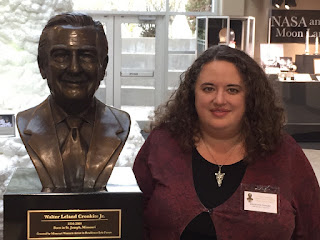A cute article from the Freelancers Union caught my attention this morning: This freelancer threw herself a company party and you should, too.
It’s a little too cute – I can’t quite get behind giving myself a speech or a team-bonding activity with just me. But I can definitely get behind the happy hour.
In all seriousness, somehow the one-year anniversary of Donald Media kind of slipped my attention. July 27, 2018 was the day I departed the world of daily news, but this site launched more than a month beforehand: June 11, when I announced my impending departure and launched the Patreon, which was my first freelance endeavor.
It’s funny – a lot of the things they tell you to do when you go freelance were impossible for me. I could not begin freelancing on the side to build up a client base while I was still at the newspaper, because it would have been a violation of my terms of employment to write for competitor papers while I was on staff. Other than my fiction work , I had to wait until I was actually gone before I could query potential clients.
It’s kind of like jumping off the high dive and waiting until you’re in midair before you see if there’s water in the pool.
I didn’t go splat. I didn’t immediately start making six figures, either. I started in what I knew – local news – and that continues to be a major income stream for me. I branched out into magazines and find that they really suit me well. I used to joke at the newspaper that I was built for magazines, because I was famous for writing too long. It turns out that wasn’t a joke.
I did stumble quite a bit that first six months, because I realized why the experienced freelancers shook their heads sadly when I shared my exciting plans to freelance full-time while going to grad school. That first semester nearly killed me and I was only taking two classes and teaching one. This semester is actually easier with three classes as student and one as teacher, because two of them are independent studies. And by “easier” I mean that I’m not staring at myself in the mirror and chanting “you have not made the biggest mistake of your life” and “yes, you are smart enough for this.” They shook their heads because they knew that “full time” for a freelancer is a hell of a lot more than 40 hours a week punching a clock at a desk.
It did get disheartening sometimes, especially in those early months when I only had one or two clients and my Contently portfolio was thin. There’s also the matter of my family: I have a husband and son who are also in college, and sometimes we are up to our eyeballs all at the same time. I have an obligation to my family for my time, support, food and finance, and that requires diligent effort.
Then my work took another side turn when I took a class in creative nonfiction. It was just supposed to be an elective to supplement media studies, but it turns out I absolutely love it. I was always writing creative nonfiction in the form of personal essays and the occasional rant, but I didn’t know there was a form to it or that I’d be really good at it. Or that people would pay me for it.
In many ways, the practice I got in that class has reformed my image of what Donald Media can be – and really, Donald Media is the term for all my freelance work under one umbrella:
- Local news reporting (including the student newspaper)
- Magazine journalism.
- Volunteer work with SPJ and public speaking advocacy for the profession.
- Photography, both news and artistic.
- Creative nonfiction/essays on Patreon and Medium.
- The blog series: CultureGeek, Patreon, Literary Underworld, and here.
- Editing and writing coaching in fiction and nonfiction.
All of that is partnered with my fiction work (albeit only short stories until I finish the bloody masters), my teaching, and of course school. I need to pass this semester and two more classes next semester, finish and defend Ye Olde Thesis, and I’m done. I will have the masters, which makes me eligible to teach.
It looks like a lot. It IS a lot. I’m working harder than I’ve ever worked in my life, and with that I include the 65-hour weeks constantly on call at my first full-time reporting job with a baby at home.
And yet. It’s stressful and difficult and the money is what it is and sometimes I have to chase it. But I have the great privilege of doing the work I love and being my own master, and I wouldn’t trade that for anything.
So, happy year one to the troops, congrats on all we’ve done, and here’s to that happy hour.









